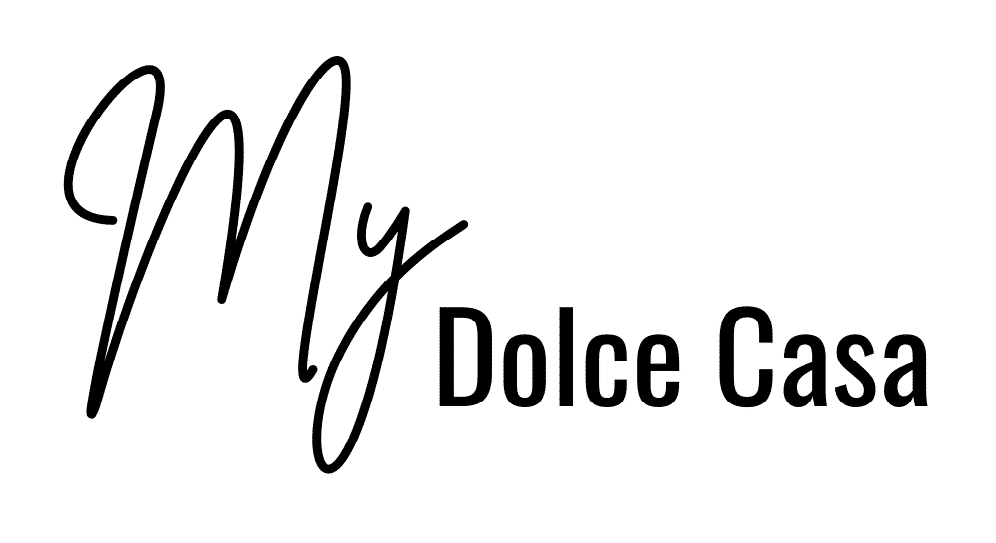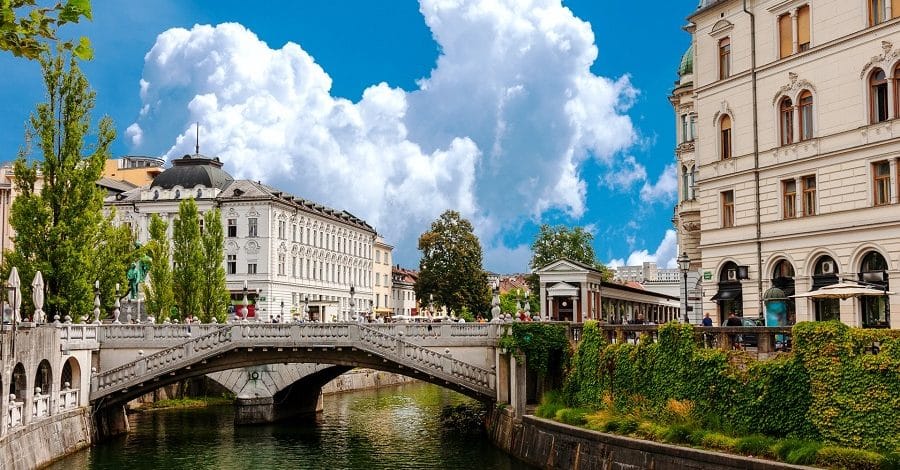Slovenia is a tiny little transit country that’s located in South Central Europe. Bordering with Austria, Hungary, Italy, and Croatia, it’s one of the most conveniently placed destinations that many consider not only as a solid option for retirement as an expat, but also a surprisingly gorgeous country to call home.
But what makes retiring in Slovenia such an attractive proposition?
The top 6 reasons to retire in Slovenia
1. A geographically diverse landscape
Despite its rather modest 20,271 square kilometers of landmass, Slovenia has virtually every geographical element you can imagine. From mountains, lakes, fields, majestic forests, a small 50km stretch of coastline and even some underground caves, the country is known for its geographic diversity that almost gives it the appearance of a four seasons pizza.

Naturally, this means plenty of hiking and sightseeing opportunities to enjoy as Slovenia is a very suitable place if you’re after retaining an active lifestyle well into your retirement. Some of the highlights and top natural attractions include:
- Bled Island. Featuring a medieval church from the 15th century that lies in its center, this is a popular pilgrimage site and a peaceful place for retirees to hang out. To reach the island that’s situated in the middle of the lake, you can take a boat ride.
- Triglav National Park. For those who want to pay their respects to Mother Nature and aren’t afraid of a little hike, there are several park trails to explore.
- Postojna Cave. This iconic Slovenian underground cave is the home of proteus, the legendary “human fish”.
- Pohorje. During winter, the ski resort comes alive. For the rest of the year, it’s the go to hiking spot for many who are living in Styria, youngsters and retirees alike.
- Savica waterfall. Situated in Bohinj, this is one of the most unique waterfalls that splits into two. It’s quite a peaceful retreat.
2. Slovenia is relatively crime-free
You’ll find that unfortunate events like crimes are virtually non-existent, thus allowing for a peaceful retirement. According to Numbeo, the general level of crime in Slovenia is extremely low.
Diving deeper, let’s take a brief look at at how living in Slovenia might put you at risk of criminal activity in certain regions.
Dolenjska (southeast) is the leading region in crime, the prevalence of which is noticeably higher than the what is to be expected living in Slovenia. However, don’t get the wrong impression – it’s still a comparatively small number compared to the US, though. To be specific, Kočevje has 3 times the crime cases of Ljubljana. In concrete numbers, this would be 0.9 per 10,000 inhabitants per year, which, in the grand scheme of things, is a relatively small number still. And in most of Slovenia violent crime statistics are very close to none.

If you’re worried about theft and petty crime, Ljubljana, Slovenia’s capital, is the riskiest place to be. In terms of overall safety and level of crime, however, it’s still extremely safe, as reported by Numbeo. Compared to Koper, the seaside town, the risk of experiencing this is about 3 times higher in Ljubljana. Overall, petty theft is a relatively small issue in Slovenia, if at all. In Ljubljana, this would be 7.2 cases per 10.000 inhabitants per year, whereas in other areas of the country, the numbers go down significantly to about 1 case per 10.000 inhabitants per year or even less.
Last but not least, do know that living in Podravska (or Styria as the northeastern part of Slovenia is often referred to) puts you at an increased risk of violent crime, but not considerably more so than living in Slovenia in general. As you can see, Numbeo‘s crime index of Maribor is still extremely low. In concrete numbers, this comes down to 1.4 cases per 10.000 inhabitants per year, whereas in Ljubljana, the numbers are about 2 times lower. In general, violent crime is not something you are likely to encounter in Slovenia during your retirement.
The bottom line is, you should consider moving to Slovenia if you’re after a peaceful retirement that’s virtually free of crime and violent altercation. For the concerned, the overall safest regions are Gorenjska and Notranjsko-kraška.
3. In Slovenia, everyone knows each other (almost)
Slovenes are a Slavic culture consisting of 87% native inhabitants (the rest are mostly minorities of Italian and Hungarian descent). In the previous century, Slovenia was a part of Yugoslavia, but the nation’s roots go way back to the 7th century when Carantania was in its golden years.
Living in Slovenia, you’ll quickly get the impression that everyone knows each other, which is not far from the truth due to the country’s rather modest population of 2 million. For seniors who love to socialize, this creates a warm and friendly climate to expand their social circles and create friendships that will last for a lifetime. In other words, assimilation will be a breeze regardless of your age!

Although it would be hard to pinpoint a specific characteristic everyone shares, the love of sports would probably be the closest to that. In fact, many well-known athletes are Slovenian, including Tina Maze, Peter Prevc, Jolanda Čeplak, Luka Dončić, Tadej Pogačar, and many others.
At any rate, you are probably not a true Slovene unless you have climbed mount Triglav at least once and refuse to wear shoes indoors. But if you choose to spend your senior years living in Slovenia, you will quickly adopt the healthy lifestyle of your peers and may very well start enforcing the no-shoes-indoors rule yourself.
4. Affordable prices and a high standard of living
Moving to Slovenia from US, you’ll find that prices are more affordable (at least if you’re willing to settle down anywhere outside Ljubljana, the nation’s capital). Despite this, the quality of living remains rather high, much in line with other Central European countries.
If you’re looking to purchase an apartment in the city center, prepare to shell out anything in the ballpark of $2,500 to $3,500 per square meter. Outside the city, the prices drop down to anywhere between $1,850 and $2,500.
Living in Ljubljana, monthly rental prices for a one bedroom apartment start at $400. A three bedroom apartment in Ljubljana would cost you $800. In Maribor, the second-largest city, however, you can get a similar deal for three quarters of the price, and your rental costs can be even more budget-friendly than that if you’re willing to live way out in the rural areas of Slovenia.
All in all, this should give anyone plenty of options to choose from, thus allowing for a comfortable retirement no matter what your budget may be.

5. Accessible healthcare system
One of the most apparent things you’ll notice moving to Slovenia from US is how accessible the Slovenian healthcare system is, including for expats and retirees. In fact, for Slovenian residents, it’s compulsory, and it covers all urgent health treatments and examinations in public hospitals (with the notable exception of some very specialized treatments).
For those moving to Slovenia from the United States, there are several private healthcare insurance carriers you can use, most of which are considered inexpensive by the US standards. In Slovenia, prescription medication is easy to access, and it’s not particularly hard to find a pharmacy that is open 24/7. Alternatively, feel free to take advantage of online pharmacies that allow for a door-to-door delivery.
Overall, given how complicated, stressful, and sometimes downright impossible it is for older individuals to get access to healthcare insurance in the US, retirees will find Slovenia’s healthcare system a welcome breath of fresh air.

6. Food
While moving to Slovenia for the food alone probably won’t be the one thing that moves the needle, it’s still an honorable mention and an important ingredient of making your day to day retirement life that much sweeter.
If you consider yourself a sweet tooth, you will find plenty of opportunities to indulge in many Slovenian desserts and delicacies.
For starters, gibanica, the traditional Slovenian cake, is a must-sample. Consisting of walnuts, apples, raising, poppy seeds, and quark fillings, it’s a dish that can either be served hot or cold.
Next, Slovenia prides itself with potica, the legendary rolled pastry. Inside, you will find dough with a multitude of different filling options, the most popular of which is walnut.

Last but not least, don’t forget to treat yourself to krofi, which are Slovenian-made donuts. Apart from the standard ingredients (flour, butter, eggs, yeast, milk, vegetable oil), there is some room for customization, as you can choose from a myriad of toppings (chocolate, sugar, or others) and fillings (marmalade, vanilla, and so forth). At the end of the day, there is no Slovenian Carnival without krofi!
Bottom line: your retirement in Slovenia will be as sugary and sweet as you want it to be. Do note that the country is also known for its locally-sourced produce, which translates in healthy eating for those who prefer to keep their health the number one priority.
As you can see, moving to Slovenia and living out your golden years there can be an adventure in and of itself, especially if you’re into nature and sports. Knowing what you know now, it’s up to you to make the leap.

